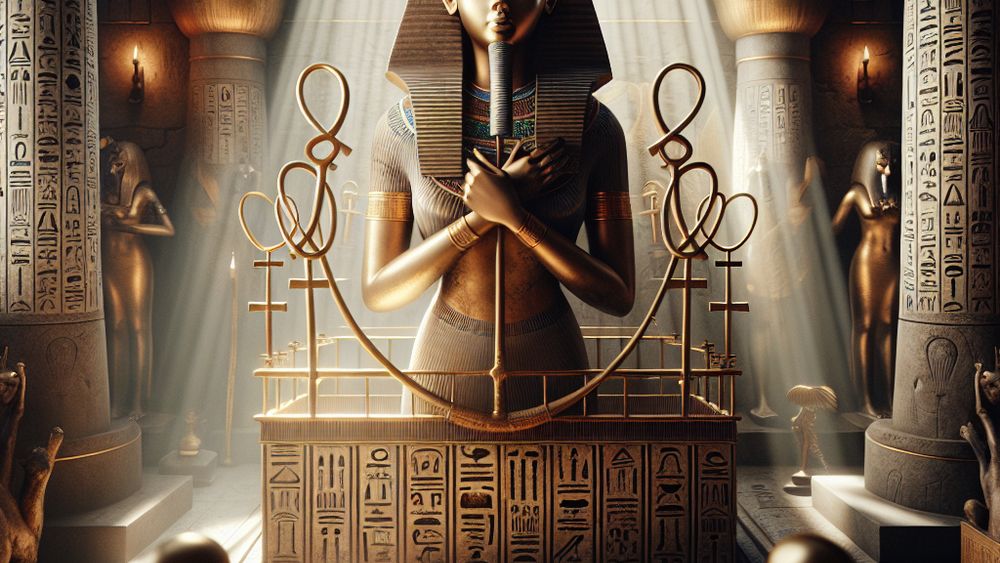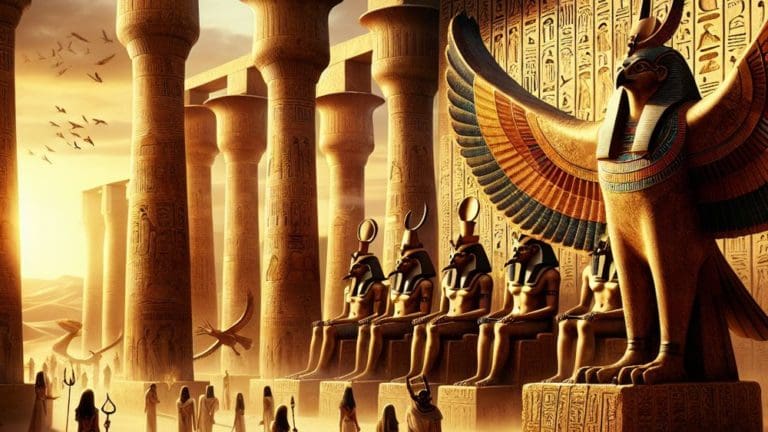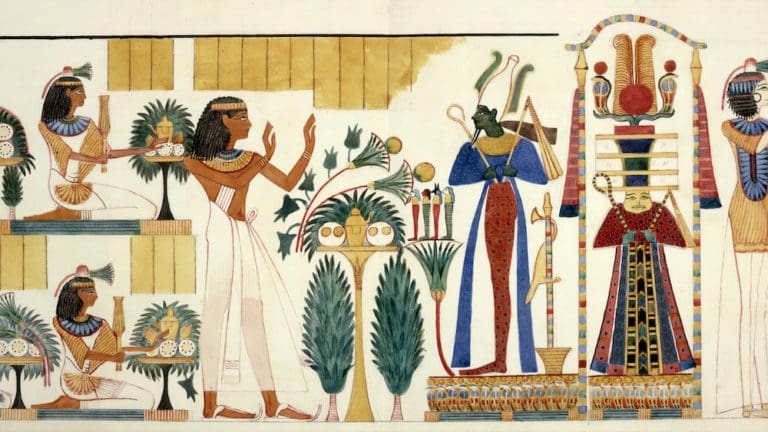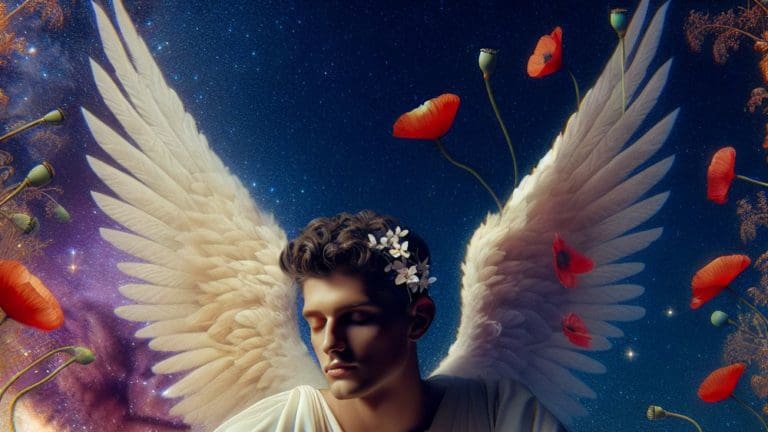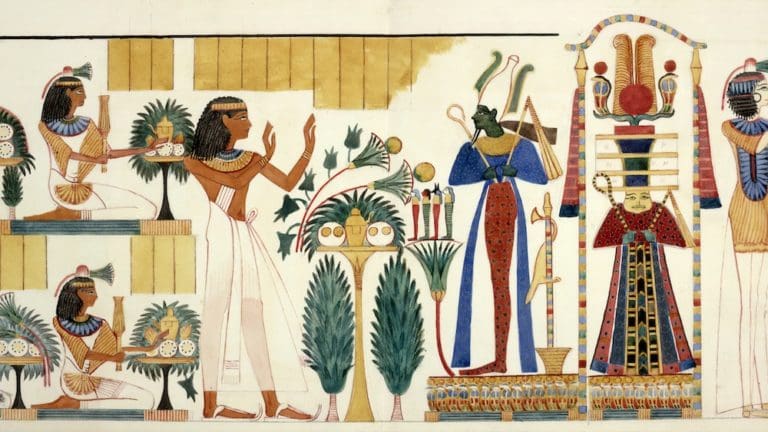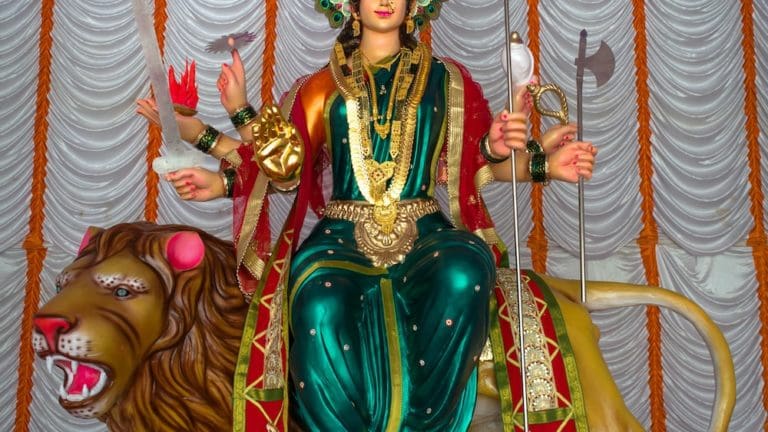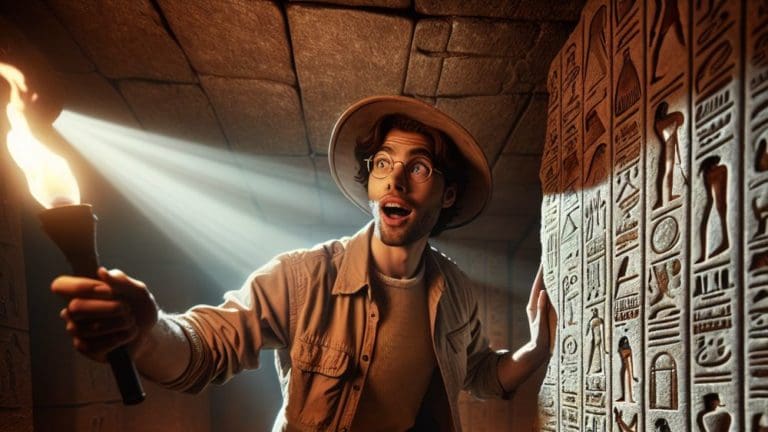Anput: Egyptian God Of Funerals And Protection
Anput: Egyptian God Of Funerals And Protection
Delving into the annals of Egyptian mythology, one cannot help but be ensnared by the enigmatic allure of the Egyptian god Anput. Her name whispers of ancient secrets and hidden depths, beckoning the curious and the brave to explore her domain. Anput, often shrouded in mystery, holds a unique position among the pantheon of gods and goddesses, being intricately linked with funerals and the protection of the dead. What tales does she hold within the mists of time? How does her story intertwine with the tapestry of ancient Egyptian beliefs and practices?
Key Points:
- Anput is an Egyptian goddess associated with funerals and protection.
- She is linked to the god Anubis, serving as his wife and counterpart.
- Anput’s symbols include a jackal head, flail, scepter, and Upper Egyptian crown.
- She played a crucial role in guarding and guiding the deceased in the afterlife.
- Anput’s worship was centered in locations like Cynopolis and Asyut.
- The goddess influenced funerary practices through rituals like mummification and grave goods.
- Anput’s role highlights the significance of protection and guidance in ancient Egyptian beliefs about the afterlife.
As we embark on this journey, understanding the mythology and history of Anput is akin to unwrapping the layers of an ancient artifact, each layer unveiling fresh insights and evoking a sense of wonder. Her role in ancient Egyptian religion was not just about guiding the dead but also about enveloping them in her protective mantle. Join me as we delve into the enigmatic world of Anput, exploring her origins, symbols, and enduring influence on the beliefs surrounding death and the afterlife.
The Mythology and History of Anput
The mythology and history of Anput are like a fascinating puzzle, whose pieces are scattered across the sands of time. As we piece them together, a captivating picture emerges, sketched with the hues of belief, ritual, and devotion that colored the lives of the ancient Egyptians.
Origins and Family of Anput
Anput’s lineage is as intriguing as her domain. Born of ancient gods, she navigates the realms of the dead with a grace only a deity of her lineage could possess.

- Mother: The mother goddess and sky goddess, Nut, whose vast expanse envelopes the heavens.
- Father: Geb, the earth god, instilling strength and stability.
- Siblings: Include Osiris, the god of the afterlife; Isis, the goddess of magic; Set, the god of chaos; and Nephthys, the mistress of the house.
- Consort: Anubis, the jackal-headed god of mummification and the afterlife, serves as both her husband and close collaborator.
- Offspring: Together with Anubis, Anput is the mother of the goddess Kebechet, who is associated with purification and embalming.
Anput’s lineage includes ancient gods such as Nut, Geb, Osiris, Isis, Set, Nephthys, and Anubis, shaping her unique grace and power in the realm of the dead.
Anput’s Role in Ancient Egyptian Religion
In the pantheon of ancient Egyptian deities, Anput holds a distinctive yet somewhat enigmatic role. Her duties and significance weaved into the very fabric of Egyptian funerary practices and beliefs.
- Guardian and Protector: Anput served as a guardian of the dead, ensuring their safe passage into the afterlife.
- Association with Anubis: Her close connection with Anubis enhanced her presence in rituals of death and mummification, where she provided additional guidance and protection.
- Participation in Judgement: In the weighing of the heart ceremony, Anput stands as a presence ensuring the balance of truth and order against the feather of Ma’at.
- Feminine Counterpart: As the female counterpart of Anubis, Anput embodies the aspect of protection and nurturing, offering a maternal presence to those journeying into the afterlife.
The Symbolism and Worship of Anput
The symbolism and worship of Anput are rooted in her role within the pantheon of Egyptian deities, as well as her significance in the lives of the ancient Egyptians. Her representations and the devotion she garnered speak volumes about the culture’s views on death, afterlife, and the divine protection bestowed upon the departed.
Iconography and Symbols Associated with Anput
The iconography and symbols of the Egyptian goddess Anput are deeply intertwined with her role as a protector and guide in the afterlife. Anput is often depicted with features resembling those of a jackal, similar to her counterpart, Anubis. This resemblance highlights her connection to death and the afterlife, signifying her role as a guardian.
- Jackal head – A symbol of protection and guidance in the afterlife.
- Flail and scepter – Representing her power and authority.
- Upper Egyptian crown – Signifying her sovereignty and divine status.
These symbols serve not only as means of identification but also as emblems of her power and protection over the deceased. The presence of these icons in ancient Egyptian art and artifacts underscores Anput’s significance in mythology and religious practices.
The Cult and Temples of Anput
The cult and worship of the Egyptian goddess Anput played a significant role in the religious landscape of ancient Egypt. Her temples served as centers for her worship and were often linked to the cult of Anubis, reflecting their close association in Egyptian mythology.

| Location | Significance | Associated Deities |
|---|---|---|
| Cynopolis | Main center for Anput’s worship; closely linked to Anubis | Anubis |
| Asyut | Site of significant cult activity for Anput and Anubis | Anubis, Osiris |
This table showcases how Anput’s worship was intricately tied to significant locations in Egypt, further emphasizing her importance in funerary practices and the protection of the dead. The rituals and ceremonies held in her honor speak volumes about the Egyptians’ respect for her role as a guardian of the afterlife.
Anput’s worship was intricately tied to significant locations in Egypt, emphasizing her importance in funerary practices and the protection of the dead.
Anput’s Influence on Funerary Practices
The influence of the Egyptian goddess Anput on funerary practices is evident in the meticulous care and rituals the ancient Egyptians devoted to the dead. Her role as a protector and guide for the deceased in the afterlife shaped many aspects of Egyptian burial customs.
- Mummification rituals – Seeking her protection for the deceased’s journey.
- Grave goods – Items placed in tombs to ensure her favor and guidance.
- Funerary texts – Invocations to Anput to guard and guide the soul.
These practices underscored the Egyptians’ belief in Anput’s critical role in safeguarding the soul’s journey to the afterlife. The devotion to these rituals reflects the deep reverence and reliance on Anput’s guidance and protection during one of the most critical transitions in Egyptian religious belief – the passage from life to death.
FAQs
1. How is Anput related to Anubis?
Anput is related to Anubis as his wife and counterpart, underscoring their shared responsibilities in guarding and guiding souls in the afterlife. Their partnership reflects a harmonious balance in ancient Egyptian mythology, where both deities played key roles in the protection of the dead.
2. What are the main symbols associated with Anput?
The main symbols associated with Anput are closely related to those of her counterpart, Anubis. This includes the imy-ut, or the carrying pole, often seen over her shoulders, symbolizing her role in protection and guidance through the to the afterlife. Another significant symbol is the jackal, representing her connection to the desert and her role as a guardian of cemeteries.
3. In what ways was Anput worshipped by the ancient Egyptians?
Anput was worshipped by the ancient Egyptians through various funerary rituals and offerings. Devotees believed in her protective powers and sought her blessings for the deceased, ensuring their safe passage to the afterlife. Although no temples dedicated solely to Anput have been discovered, she was revered in the worship spaces of Anubis, emphasizing her integral role in Egyptian funerary practices.
4. How does Anput differ from other Egyptian deities in terms of roles and attributes?
Anput differs from other Egyptian deities notably in her specialized role associated with the afterlife and protection. While many gods and goddesses have a broader domain, Anput’s focus is sharply on funerary rites and safeguarding the journey of the deceased. Her distinct connection as the wife of Anubis and their shared responsibility in embalming and guidance through the afterlife sets her apart as a guardian with a unique and complementary role.
Conclusion
In delving into the mysteries that shroud the Egyptian god Anput, we’re offered a glimpse into the ancient Egyptian beliefs surrounding death and the afterlife. Her stories and symbols underscore the importance of protection and guidance of the deceased, elements which were paramount to Egyptian funerary customs. As we uncover more about Anput’s role and significance, she continues to captivate not just scholars, but also history enthusiasts, travelers, and anyone intrigued by the mythologies of ancient Egypt. So, let us keep exploring the rich tapestry of Egyptian mythology, sharing stories and insights that bring us closer to understanding the afterlife beliefs of this fascinating civilization. Let the Egyptian god Anput inspire us to uncover more about the mysteries of the past. Farewell for now, and may your own journeys of discovery be as enriching.
Warmly,
Cedric

